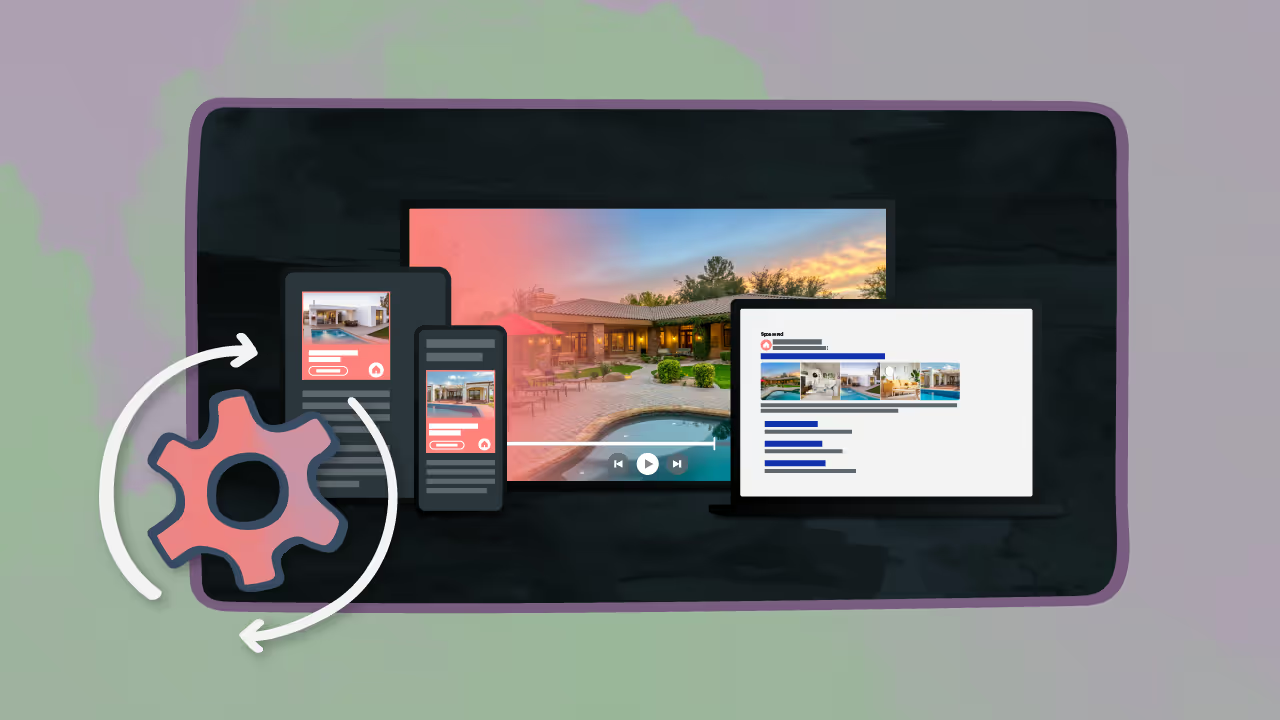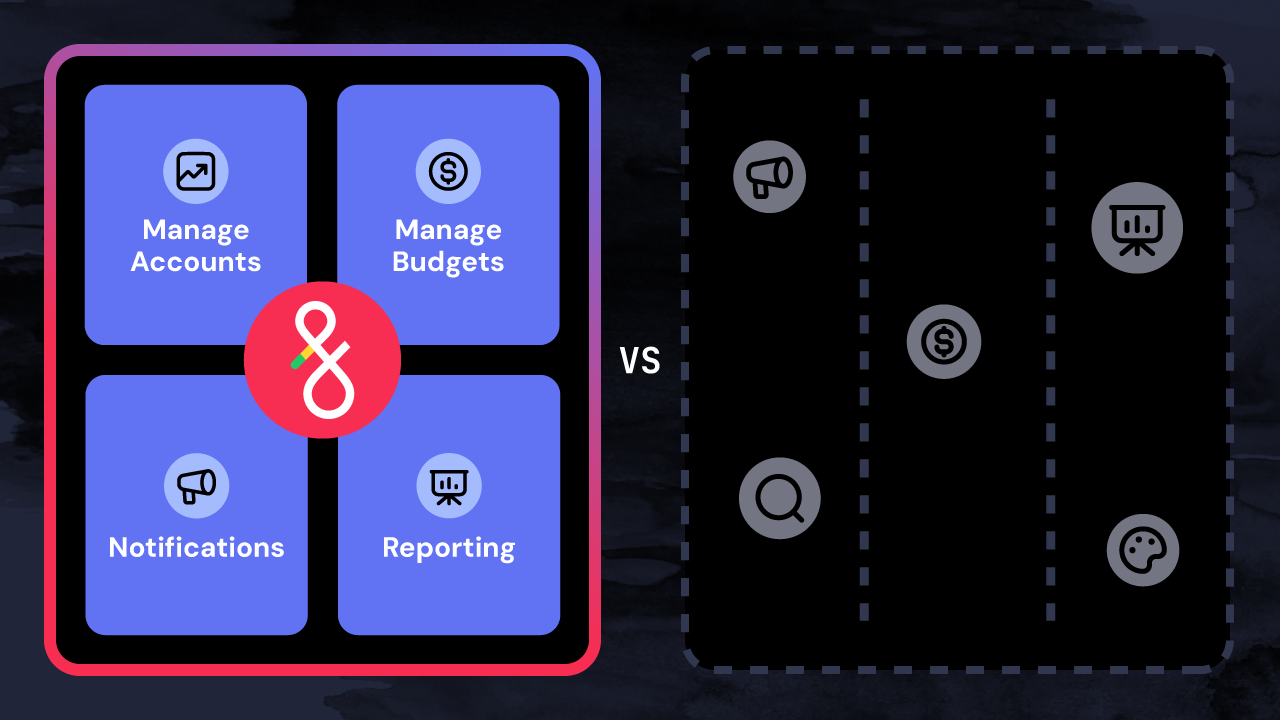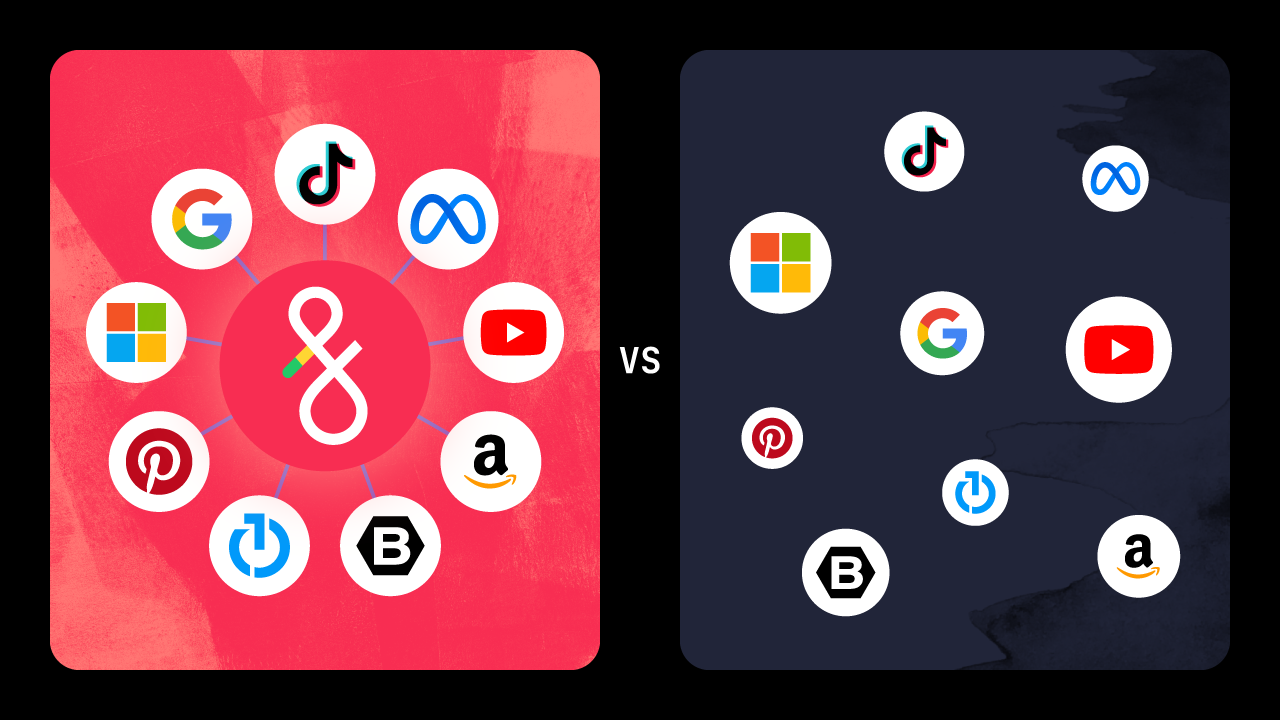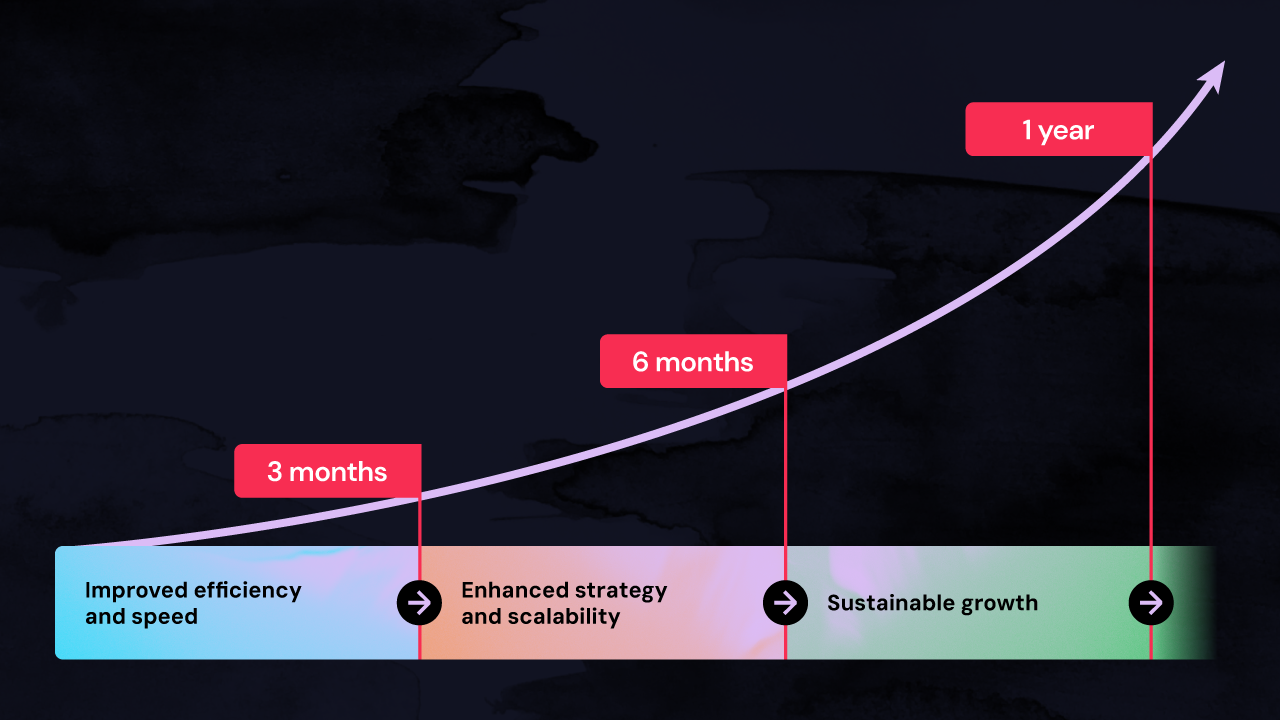When managing digital advertising campaigns at the enterprise level, continuous optimization is crucial for driving performance at scale. Enterprise ad portfolios present significant challenges, including balancing growth alongside headcount. Achieving local relevance within a complex media landscape is equally challenging, as enterprises strive to make their campaigns more granular on regional and local levels.
The key to overcoming these challenges and streamlining processes lies in centralizing your workflows with the help of enterprise advertising automation. Centralizing critical workflows from across all major channels means you can accelerate account launches, streamline workflow management, optimize across channels, and address critical issues at scale.
In this article, we’ll dive into:
- An overview of enterprise ad campaign automation
- Best practices for getting started
- How to maximize your automation efforts for ROI
Though this concept may appear daunting—especially across thousands of ad accounts—advertising automation provides a systematic approach that ensures every action is meaningful and impactful. Ultimately, this will help your company drive better multi-location advertising outcomes with far less effort.
What is enterprise ad campaign automation?
Enterprise advertising campaign automation leverages technology and software to streamline the creation and management of advertising campaigns across multiple channels, including social media, search engines, and display networks.
This approach helps large organizations save time, cut costs, and enhance the efficiency and impact of their online advertising efforts. For example, a recent survey reported that 90% of B2B marketers report better ROI when using AI for campaign optimization: a strong indication that bringing in advanced tech, like advertising AI agents, should be on every advertiser’s radar.
Here are a few key items to keep in mind when getting started:
- Define your advertising goals: Before creating any advertising campaign, it is essential to define your goals and objectives. Do you want to increase brand awareness, drive more website traffic, generate leads, or increase sales? Your goals will shape how you build out your campaigns.
- Identify your target audience: Once you have defined your goals, you need to identify your target audience to ensure that your ads reach the right people. Using primary customer data to create detailed buyer personas can help you precisely target key audiences based on demographics, interests, behaviors, and other factors.
- Choose your digital advertising channels: Depending on your goals and target audience, you need to choose the right advertising channels to reach your audience (e.g. Google Ads, Amazon Ads, Meta, or LinkedIn.)
- Create ad campaigns: After selecting the advertising channels, enterprise ad campaign automation tools can help you create and launch your campaigns quickly and efficiently. You can create ad copy, visual assets, and test different variations to optimize ad performance.
How to maximize your enterprise advertising efforts
While the previously mentioned steps can help you get started with enterprise ad automation, there are ways you can improve your advertising efforts for even greater ROI.
To get the most out of ad campaign automation, you should:
- Identify time-consuming tasks: Whether it's budget pacing, campaign building, or managing accounts, all of these efforts can eat up precious bandwidth. By pinpointing your team’s most time-consuming tasks, you can develop tech-forward strategies that remove friction from your enterprise and multi-location operations. This might include adopting automation tools or offloading workflows to AI agents to ensure your team works as efficiently as possible. The goal is to reduce manual workloads, allowing your team to focus on higher-value activities that drive growth and innovation.
- Templatize complex account structures: If you’re an enterprise operating across multiple markets, franchisees, or diverse product lines, managing a complex account structure is essential. For example, creating multiple campaigns and ad groups categorized by different criteria (e.g. geography, product type, or customer segment) can optimize internal structures that enhance automated workflows.
- Monitor and optimize your campaigns: Ad campaign automation software can also help you monitor real-time ad performance metrics such as impressions, clicks, conversions, and return on ad spend (ROAS). You can use these metrics to optimize your campaigns by adjusting your targeting, bidding, and creative elements—or, better yet, hand off campaign optimization to AI and automation solutions for always-on improvements.
- Set up a portfolio-wide management structure: A portfolio-wide management structure allows enterprises to oversee and optimize multiple accounts from a single centralized system. This holistic approach ensures that resources are allocated efficiently across all campaigns. Plus, performance metrics are standardized for easier analysis across your entire enterprise or (multiple locations).
- Measure your results: Finally, you can use ad campaign automation and AI agents to analyze campaign results and generate reports so you can easily see if you achieved your advertising goals. If things don’t turn out as well as you hoped, AI can generate multi-channel improvement recommendations tailored to your specific goals.
Integrating these technologies and the best practices outlined above into your enterprise advertising efforts can help your team scale and adapt to ever-changing market dynamics. A few of the benefits include:
- Centralized management of multiple advertising campaigns across various channels, such as social media, search engines, and display networks.
- Consistent, compliant messaging and branding across your most critical campaigns.
- Access to advanced analytics and reporting features, enabling enterprise advertisers to track multi-channel performance metrics and make data-powered decisions.
- Accurate ad spend and audience targeting.
- The ability to build thousands of compliant ads across your portfolio.
Key takeaways
- Enterprise ad campaign automation centralizes workflows, enabling faster account launches and more efficient management across multiple advertising channels.
- Automation reduces manual work by streamlining repetitive tasks like budget pacing, bidding, and bulk account management so teams can focus on strategic growth initiatives.
- Real-time monitoring and advanced AI analytics empower enterprises to optimize campaigns with precise targeting, efficient advertising budget allocation, and improved ROI.
- Portfolio-wide management structures ensure consistent branding, resource efficiency, and standardized performance metrics across diverse campaigns.
- Fluency Blueprints simplify the creation and scaling of complex campaigns while seamlessly integrating into multi-channel strategies for enhanced productivity and accuracy.
Looking to make the most of enterprise ad campaign automation? Fluency can help
Want to learn more about integrating automation into your digital advertising strategy? Our team can answer your questions and help you find the solutions that align with your goals.






